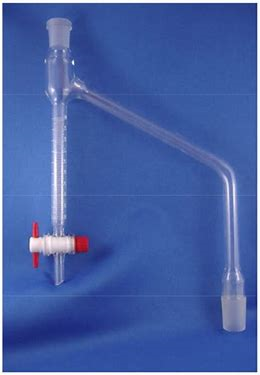Why must water be removed during esterification?
1 Answer
Well, because esterification is an equilibrium reaction, and water is one of the products.
Explanation:
We write the generalized esterification this way:
For this reaction, the equilibrium is likely to lie to the left. That is, at equilibrium, the reactants are favoured. But that really does not matter, because esterifications are usually done under Dean Stark conditions, on which I will elaborate, which effectively removes the water from the equilibrium, and which DRIVES the equilibrium to the right as we face the page....
What are Dean Stark conditions? Well, you get your acid and alcohol under reflux in benzene or toluene, and the distillate is conducted over a glass bridge to a condenser (which fits in the female socket of the trap, which collects the azeotrope, the boiling mixture of aromatic solvent and water).

The point is that once the azeotrope is over the bridge it collects at the bottom of the trap. The azeotrope separates into its phases, aqueous and organic, and the denser water collects at the bottom of the trap (the which of course is calibrated); and so water is removed from the equilibrium. Most of the time you can gauge the extent of the reaction by the quantity of the water you have collected. Typically, you would keep this at reflux for 24-48 hours to drive the esterification to completion.
The given trap has a reservoir of approx.

